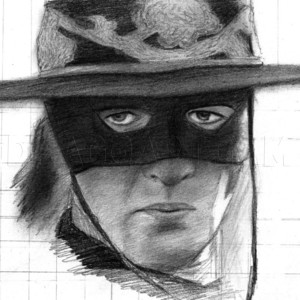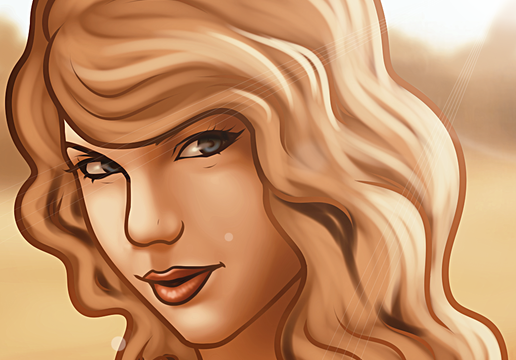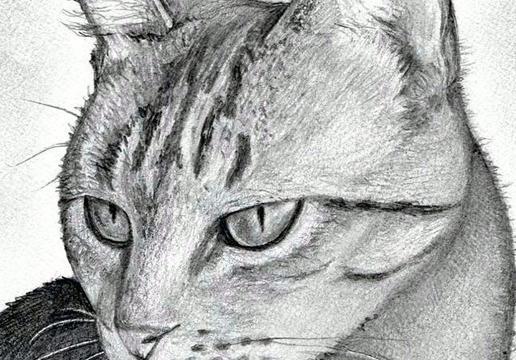How to Draw Monet, Claude Monet
1
To allow for more shading steps, I've cut down the guidelines. Let me know if this works for you. With the No. 2 pencil, start lightly drawing the oval, bisecting line, and crescent lines (for head mass). Then lightly draw lines a. for eyebrows, b. f
2
Observe where Monet's features appear in relation to the guidelines. Draw in his forehead wrinkles, eyebrows, eyes with wrinkles, and bags underneath eyes.
3
When you sketch his beard, add those straight lines and curls. Try staying close to the lines that represent the direction of his beard. This will help as you shade it in.
5
Pay attention to the placement of his beard and how it relates to the guidelines. Now draw in the wiggly lines.
7
I made this line drawing especially for you if you don't want to do the pencil shading and blending part. Otherwise, let us continue to the pencil drawing part.
8
I didn't want to skip this. The first picture shows how to hold your pencil for Overhand (great for writing & details) and Underhand (great for shading large areas in wide strokes). You can practice tone shading and take it a step further with the To
9
Here is how the tools look when I used to use the 0.7mm 2B mechanical pencil, 9B pencil, tissue, and the blending stump for my traditional drawings.
10
Best thing you can do when drawing hair is to establish the general shape then work in the main strands of hair by holding your pencil at a 45 degree angle for stroking and coverage. Then, as in the third picture, you can work in more details. But he
11
Basically all the different methods (pencil, pastels or SAI paint tool) follow the same rules--tone, highlights, and detail. If you do the whole picture in a pencil sketch, this is where you would sketch in small circles or lines to shade the areas.
12
After I got the shades of gray in and some highlight whites for his beard, I found a layer of background gray made him pop! The highlights on his face, beard, and jacket gave him a dramatic appearance. With a small pencil (pen) tool, I made more det
13
I had to lighten areas with my airbrush and pen tool on his face and within his wrinkles. Notice the inside of his eyes have been lightened but not all the way white. I darkened the shadowed areas in his ear, the boarder of his cheek/beard, the pupil
14
Remember I'm observing the reference picture that's right beside my SAI program. Blurring is like blending with a blending stump or tortillon. And your darker areas become lighter too. So I blurred his face, ears, and beard. Now I'm trying to match t
Comments 0
Details
January 31, 2013
Description: Claude Monet was a founder of French Impressionist painting, and the most consistent and prolific practitioner of the movement's philosophy of expressing one's perceptions before nature, especially as applied to plein-air landscape painting. (Notes from Wikipedia. Check out more paintings and information there). This tutorial was drawn a little differently. Instead of using pencils/pastels, I've used my digital program SAI. Let me know what you think of this tut by commenting, faving or clicking on "Love It"! Peace n love to ya!






































